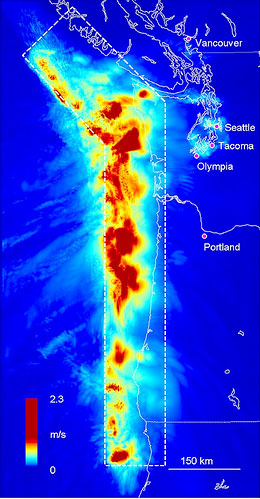West Coast Earthquake Early Warning
-
Issues and Imperatives
By:
John Vidale
University of Washington

| When: | Friday, January 25, 2013, 10:30 a.m. to 11:30 a.m. Join us for coffee beginning at 10:00 a.m. |
| Where: | Seminar Conference Room, 10100 Burnet Road, Bldg 196-ROC, Austin, Texas 78758 |
| Host: | Nick Hayman, UTIG |
Click for a Live Broadcast.
Abstract
The Cascadia subduction zone offers great utility from earthquake early warning for the Puget Sound, Portland, Vancouver, and the tsunami-vulnerable coast. So the UW and UC Berkeley, with the support of the Moore Foundation, are constructing a prototype early warning system.
The 1000-km length allows minutes of warning when a megaquake starts at a distance, as is likely. The 10,000-year record of the last several dozen great earthquakes from offshore turbidites allows good guessing of the chance of a big earthquake growing into a turbulent giant. We are far enough into the 500-year M9 cycle to have 150% of the long term odds - 1/300 odds each year. The southern stretch of Cascadia, which is prone to M8s as well as M9s, is even more primed for action.
Challenges are also outsized. Instrumentation is relatively sparse. Discrimination between a wide range of possible styles and depths of strong earthquakes will be difficult. Means of relaying warnings, discussions with potential users, and long-term funding are not yet mature.
On the figure, the color shows the peak ground velocity during a simulation of an M9 earthquake along the Pacific Northwest coastline. Image credit: Kim Olson




